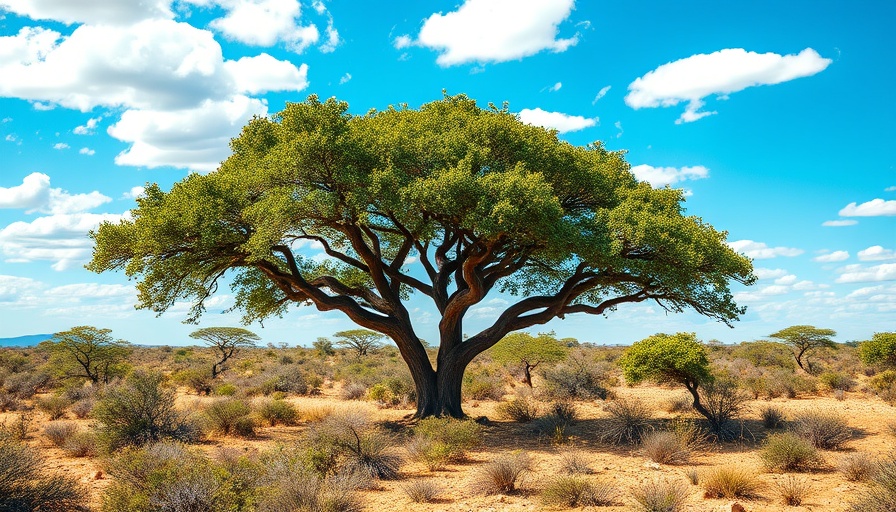
Understanding the Cerrado: A Unique Biodiversity Hotspot
The Cerrado is not just any savanna; it stands as the largest, most diverse savanna on our planet, yet research reveals an astonishing reality. Just 30 tree species out of a total of 1,605 are responsible for nearly half of all trees in this vibrant ecosystem. According to a recent study from the University of Exeter, this phenomenon known as "hyperdominance" raises crucial concerns for conservation efforts, especially given the significant tree loss in recent years.
The Significance of Hyperdominance in Ecosystems
Hyperdominance may sound like a phenomenon relegated to geopolitical matters, but in the world of ecology, it indicates a situation where select species have a noticeably disproportionate impact on their environment. In the Cerrado, the standout player is the tree species Qualea parviflora, which constitutes roughly one in fourteen of these hyperdominant trees. Dr. Facundo Alvarez, the study’s lead author, emphasized his surprise at the extent of this trend, likening it to patterns observed in the Amazon rainforest. The implications of this discovery are profound, as it reveals potential vulnerabilities in ecosystems facing threats like climate change and deforestation.
The Facade of Diversity: What It Means for Conservation
While it seems contradictory that such a diverse region relies so heavily on a handful of species, this hyperdominance complicates conservation strategies. The Cerrado region, spanning across two million square kilometers, is essential for various environmental processes, including carbon sequestration and water purification. However, the concentration of reliance on these 30 species means that an ecological destabilization could have catastrophic consequences. If detrimental environmental changes adversely affect these key species, the entire ecosystem may falter, compromising its ability to perform essential functions.
Lessons from Nature: Biodiversity's Role Beyond Numbers
This scenario urges us to rethink our understanding of biodiversity. It’s not solely about the number of species present; it’s crucial to consider how these species interact with their environment. The structures and services provided by these trees sustain a multitude of life forms. Therefore, recognizing the interconnectedness of species can assist researchers in predicting how disturbances may impact the entire ecosystem.
Future Trends: Protecting the Cerrado Amidst Growing Threats
As we ponder the future of the Cerrado, we must acknowledge the alarming statistic from the study: an estimated loss of 24 billion trees since 1985. This staggering figure is equal to three times the planet’s current human population! Hence, understanding the implications of hyperdominance becomes critical. As Ted Feldpausch, a co-author of the study points out, focusing our conservation efforts on those 30 species can improve our predictions regarding ecosystem functioning in the face of such losses.
Call to Action: What You Can Do
As eco-conscious individuals looking to foster health and sustainability, recognizing the importance of ecosystems like the Cerrado is paramount. Each of us can contribute to conservation efforts by supporting organizations that focus on preserving biodiverse habitats, advocating for policies that protect these ecosystems from deforestation, and considering sustainable practices in our daily lives. Simple acts, such as reducing our carbon footprints or supporting local conservation initiatives, can make a significant difference.
Conclusion: Embracing Biodiversity Both Globally and Locally
The hyperdominance of tree species in the Cerrado underscores the intricate balance of our natural world. Understanding these dynamics can empower us to advocate for meaningful change. By working together towards conservation and sustainability, we can protect not only the Cerrado but the myriad ecosystems that sustain life on Earth.
 Add Row
Add Row  Add
Add 




 Add Row
Add Row  Add
Add 

Write A Comment